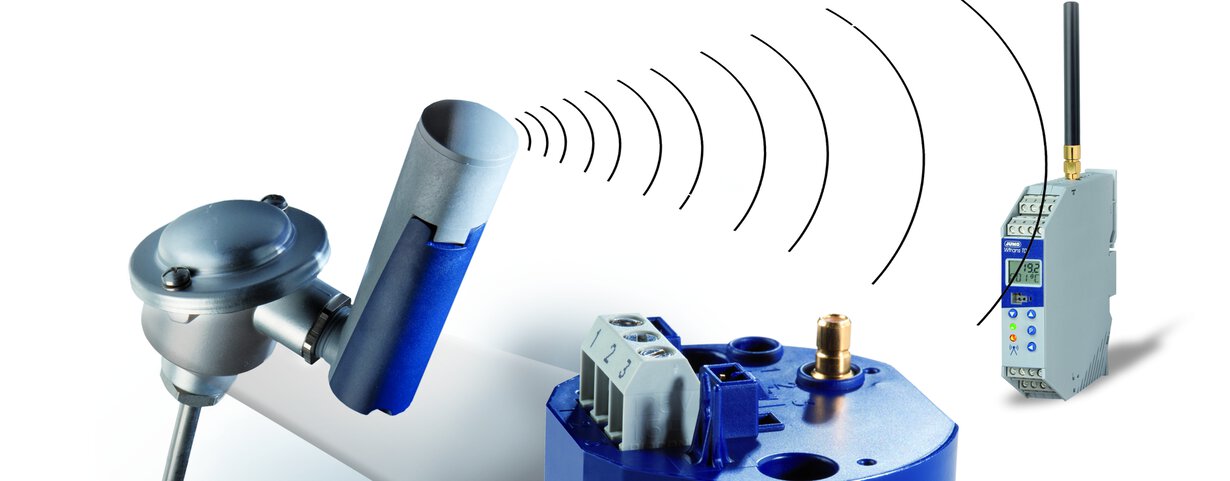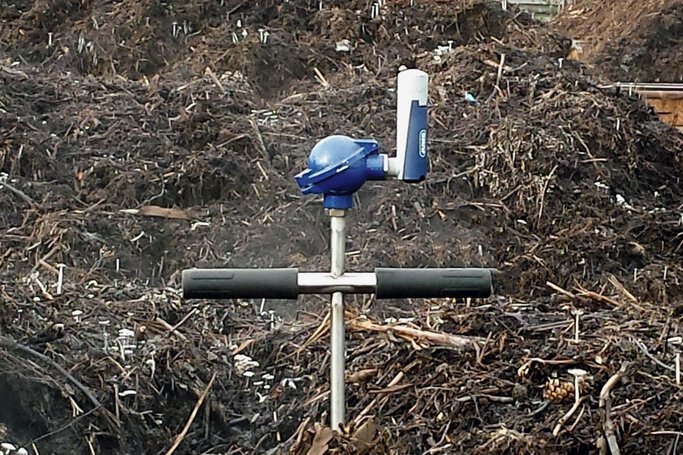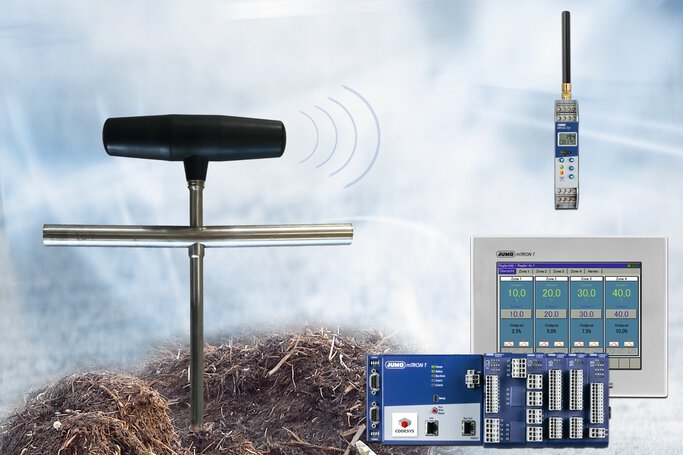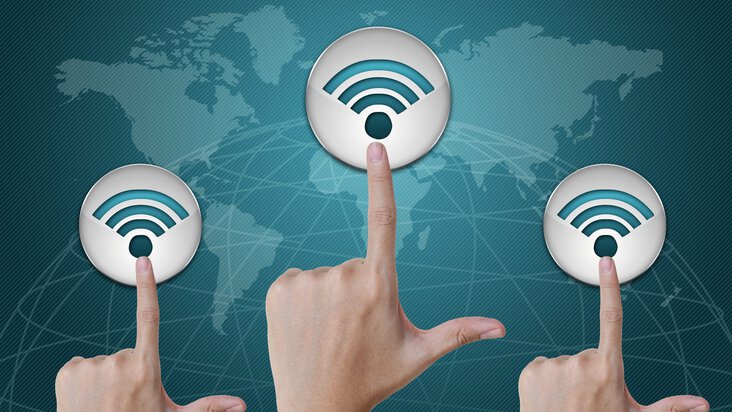

Wireless temperature sensors – operation, application, advantages
Wireless temperature sensors are just as accurate as those connected by the traditional method, but they have the added advantage of allowing measurement in hard-to-reach places. Read the article and find out how they work, where to use them and what issues to think about before buying.
Wireless temperature sensor – what is it?
A wireless temperature sensor is used to measure and transmit temperature information via a digital signal – without the use of cables or wires. The sensor relies on a battery-powered microprocessor that captures temperature information from a nearby area. The device then uses radio waves to transmit this data to a central device.
Automation system for wireless temperature measurement – operation
The value measured by the wireless temperature sensor is first transmitted via radio signal to a receiver, such as JUMO Wtrans. From there, the signal can be transmitted in digital or analog form for further processing to various devices such as controllers, automation systems, indicators or recorders, e.g. PLC controller JUMO variTRON 300.
The JUMO variTRON 300 central unit can be used as a receiver for JUMO Wtrans wireless sensors. Using a router module, input and output modules can be connected and thus create a complete system with an integrated PLC.

The JUMO WTrans B wireless sensor transmits a signal to the receiver. It can then be processed by control devices.
When to use a wireless thermometer?
In many industrial applications, temperature measurement by the traditional method, based on connecting the temperature sensor by wire to other devices for indication, control, regulation or data recording, is difficult or impossible. This is due to, among other things:
-
the presence of moving parts that would damage the cables
-
difficult accessibility of measurement sites
-
lack of cable infrastructure
-
high cost of long cable routes
-
difficult accessibility through extreme conditions such as high temperature, pH, pressure, etc.
In such cases, an alternative is a wireless temperature sensor, which has no wiring and works on the principle of digital signal transmission from the sensor to the receiver.
Examples of wireless temperature sensor applications
Composting plants
Temperature plays a key role in composting plants, as it kills dangerous organisms. According to the bio-waste regulation, it is required to document temperature measurements for all composting batches. What's more, this data must be available at all times to the relevant government verification body.
Sometimes these measurements are carried out manually by composting plant operators, but this generates high personnel expenses. A better solution is wireless temperature sensors, which provide continuous, non-invasive and direct measurement of the temperature in the treated material and automatic recording of these values.

Wireless temperature monitoring system system in the composting plant with wireless temperature probe and PLC controller

Measuring system for a composting plant consisting of wireless wTRANS sensors, receiver and JUMO variTRON 500 PLC controller
Food industry
Wireless temperature measurement also plays an important role in the food industry. Wireless temperature probes can be found, for example, in:
-
tanks with mixtures, e.g. for heating chocolate
-
meat production processes
-
smokehouses
Warehouse halls
In warehouse halls, there is often no cable infrastructure to connect sensors, so wireless temperature sensors are a suitable solution.
Other examples of wireless sensor applications include:
-
Rotary ovens - they have moving parts, so cables of traditional temperature sensors would be damaged
-
Hard-to-reach measurement locations such as chimneys

Wireless temperature sensors are used in the meat industry in smokehouses and production processes, among others. At the image is wireless temperature probe for smoker and meat JUMO wTRANS T.
Remote temperature monitoring – advantages
-
possibility to monitor temperature in places difficult to access
-
continuous monitoring of processes in hazardous environments and reporting of data to the operator at a monitoring facility located at a safe distance
-
no wiring costs
-
good temperature accuracy
-
long-term stability of measurements
-
can be used to create a network to monitor many different locations from one station - centralized control of the factory
Wireless temperature sensors – questions before buying
In order to choose the right wireless temperature sensor, you should first analyze the following questions:
Accuracy and response time: How accurate does the measurement need to be and how quickly should it update?
Most wireless sensors are as accurate as their wired counterparts; however, readings are usually transmitted every few seconds to conserve battery power. If immediate measurement is required, this should be taken into account when choosing a wireless transmitter, as some models may not offer the desired response time.
Range: The range of wireless sensors varies widely. Some are designed for short-range indoor applications, while other sensors can transmit data to a receiver many kilometers away.
Regardless of the sensors' capabilities, the range of a wireless signal is always limited by obstacles. Transmission through machinery, walls and structures degrades signal strength and reduces range capabilities. As a result, the range of a transmitter located indoors is usually much shorter than that of the same transmitter transmitting outdoors in a wide field.
Frequency: European wireless products typically operate at 868MHz or 2.4GHz.
List of questions when buying a new wireless sensor
-
What do you want to measure?
-
Where do you want to install it?
-
How are you going to power it?
-
Are there any space limitations where you will be installing it?
-
What approximate range do you plan to cover with the measurement?
-
At what frequency do you want to operate it?
Insert your Text here.
- ${title}${badge}

